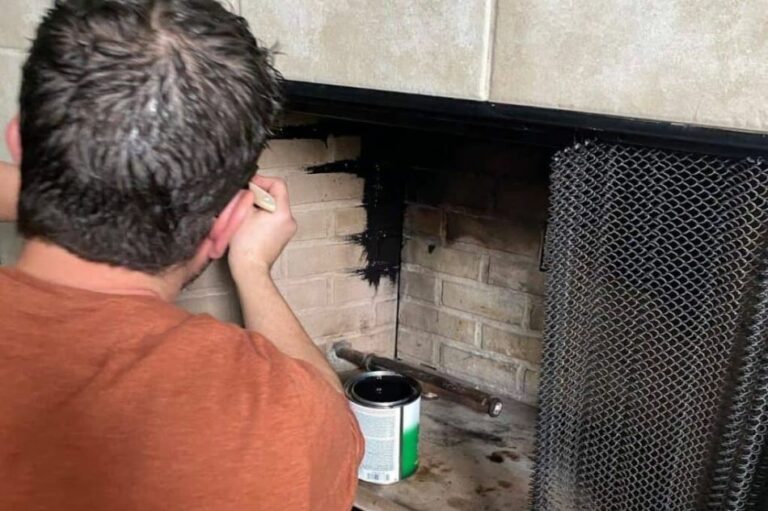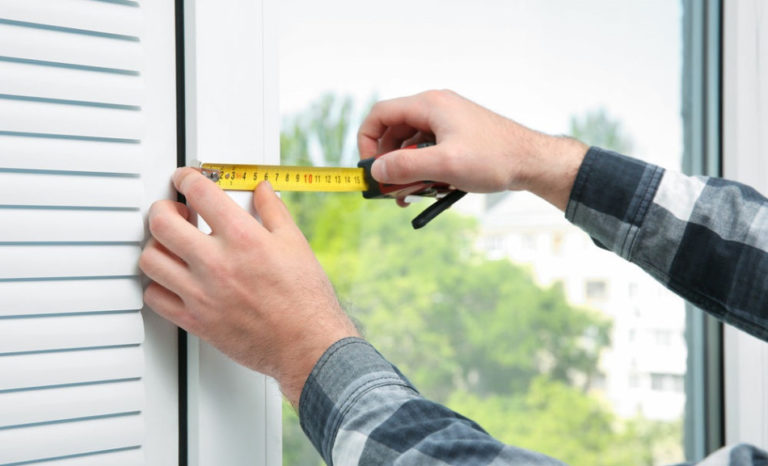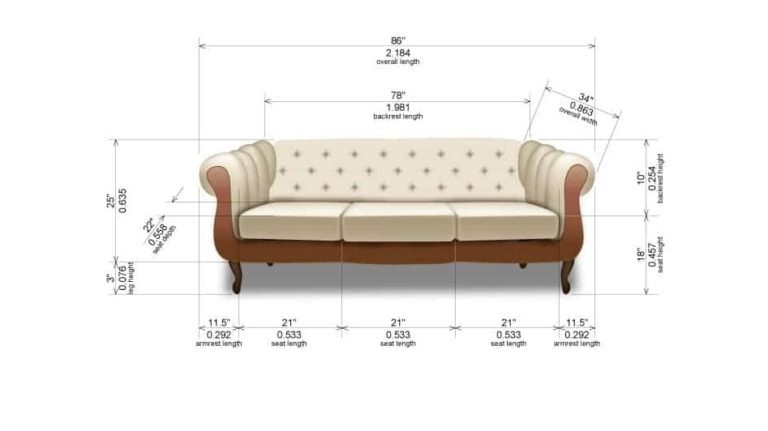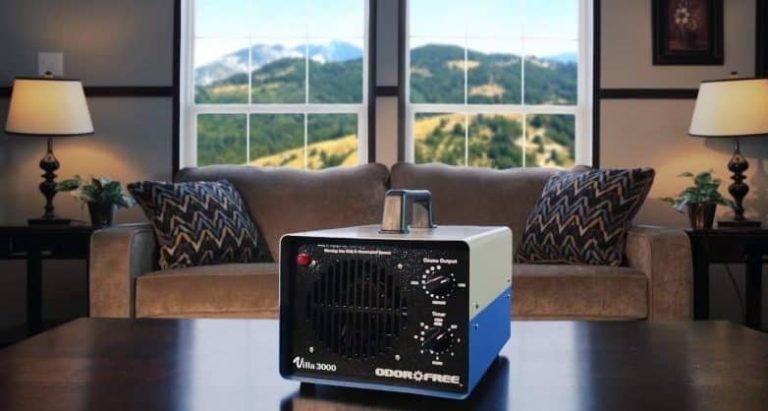How Far Should Stair Tread Overhang the Riser?
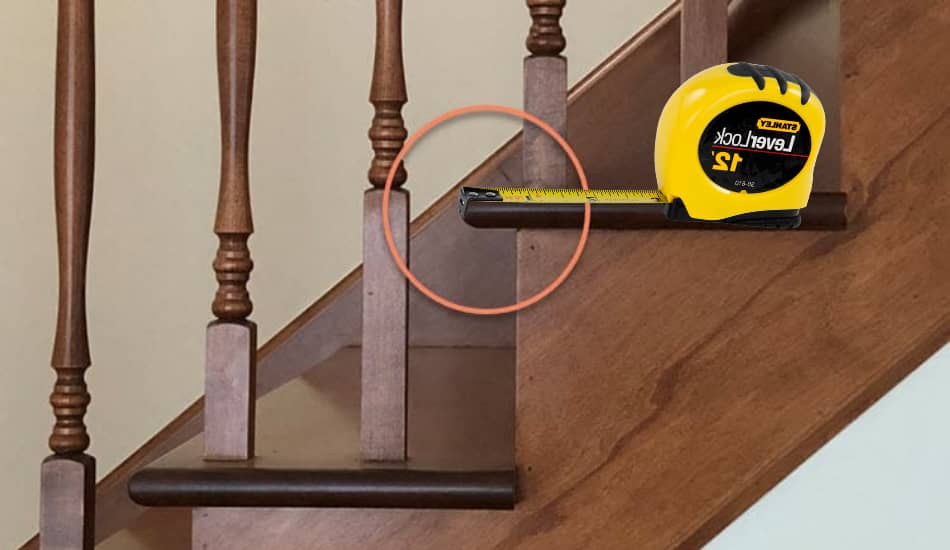
Stairs can be seen in buildings or in landscape design when you walk on them or even sit on them. If you are (un)lucky enough, maybe you even had a chance to trip on them while walking and you can thank the stair tread overhang for that. Sometimes when the overhang is too small or too big, it can make the stairs unsafe without us even noticing. In this article, we’ll explain how far this overhang needs to be and much more. So, let’s start!
Table of Contents
How Far Should Stair Tread Overhang the Riser?
So How Far Should Stair Tread Overhang the Riser? Typically, a stair tread should be a minimum of 10” deep when you measure it horizontally from the front edge to the above step’s nose. The overhang ideally projects past the riser’s edge or over the step below by ¾” to 1-1/4”. If a tread is 11-inch or more in-depth, you do not need an overhanging.
This article will provide an explanation of the tread overhang together with a look into the interior and deck stairs and their components. We will also discuss if the overhang is needed and where and also how much it needs to be. After reading this article, you should be able to understand the meaning of the tread overhang and when and how to do it.
Also, you may want to know What Is the Standard Stair Tread Thickness? If yes, be sure to read this article.
What Is The Stair Tread Overhang?
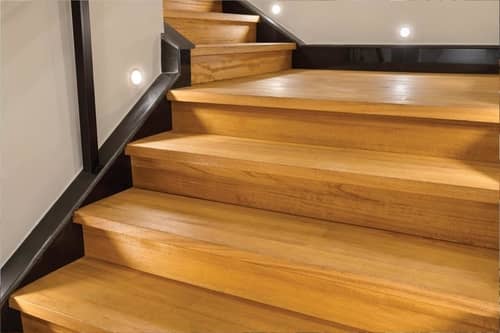
It is best to start with basic terms when you are learning about a new topic. When talking about stairs, you will be able to hear about stringers, nosing or bullnose, risers, treads, and a landing. Sometimes people also mention the rise and run when discussing something about stairs. Here is some non-complicated explanation of the terms mentioned above.
- Stringers can be solid sided or have an open saw-tooth design and they are the two parallel diagonal members supporting risers and treads.
- Risers are vertical and they are in the back of every stair. It is closed with a board that is called a riser on the main inside the staircase or open on basement or deck stairs.
- Treads are the part of the stair that is flat or horizontal and where the foot steps. It should be 10” minimum measured from the leading edge to the above step’s front edge (or below).
- Nosing is a part of the tread and it overhangs and protrudes the riser and the step below by ¾” to 1-1/4”. The lead edge can have a curvature that is 9/16” or less. It can also be ½” or even smaller bevel. It is used for safety but also for aesthetics since it hides the seam that is between the tread and the riser.
- Bullnose is rounded 180° smoothly and it is a milled edge or a trim that is attached to the side or front edges of the tread.
- Landings are a horizontal platform that is between sets of stair stringer and also the level horizontal space after the topmost stair and before the bottom-most tread.
- Rise is the total vertical distance that is measured between one and the next floor level that a set of stairs must have. Also, it is the distance between the top of one tread and the next tread’s top and it should not be over 7-3/4”.
- Run is the horizontal distance that is traveled by every tread from one riser to another or the tread’s depth that should be 10” minimum. Its total is the horizontal distance between landings. Also, it is the horizontal distance between the stringer’s lower edge and its upper rear edge.
- The going, or the horizontal distance between the tread overhang’s front edge and next step overhang’s front edge, is the clear stepping space of the tread that should be 10” minimum. The total is the horizontal distance from the bottom tread’s forward edge to the uppermost tread’s (on a stringer) rear edge.
The tread’s portion that projects past either the rise or the riser line of the step that is below it directly is called the step overhang. It can be slightly rounded, beveled, or squared at the edges. It can also be fully rounded or bullnose; it is also called nosing.
Do Stairs Need Overhang?
The overhang is something that people have been using for centuries and they use it either for aesthetics or to widen a narrow tread because it gives more space to the toe on the ascent or, on decent, for the heel. Latest studies have shown that the heel tucks into the space that is under the overhang on the descent.
Some studies show how the nosing visually highlights the step’s edge, which is why it makes it safer. The building code determines what is necessary and what is not based on studies and practices like these. The International Residential Code (IRC/ICC) determines the maximum and/or minimum guidelines that are based on common construction practices and research that has been done to increase safety. This is updated every 3 years and thoroughly reviewed.
The latest version is the 2018 one with stairways in Section R311.7. The IRC Building Code is a good place to start when you want to build something since almost every country adopted some or all of the things from it.
The minimum tread depth when excluding the overhang should be 10 inches if you check the 2018 IRC in Sections R311.7.5.2 and R311.7.5.3. Stairs should maintain this ascent of 10 inches and also have an overhang from ¾” to 1-1/4” inches. Having it this way, it is easier to increase the depth of the step which makes if better for the descent.
How Much Should a Stair Overhang the Riser?
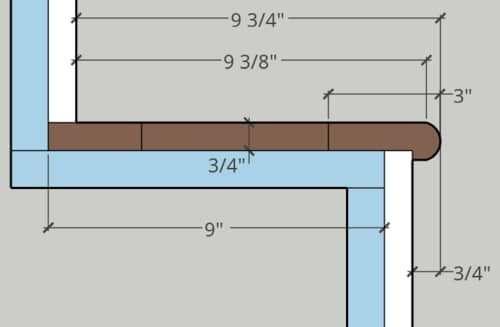
It is important to determine how much should a stair overhang the riser when you are constructing the stairs. What identifies the number of treads is the total rise against the rise of individual steps that are acceptable. To identify the depth for each step, you need to divide the total run by the number of treads.
In the Building Code, the minimum step run should be 10” while the maximum rise should be 7-3/4”. It also identifies acceptable nosing projections. To satisfy the Building Code requirements and increase the staircase’s slope, the forward tread’s edge should project over the step that is below. You should know that both too much and too little protrusion can be dangerous.
Stair Tread Nosing Overhang Code Requirements
You can find that stair nosings and treads are addressed in the 2018 IRC, in Sections R311.7.5.2 and R311.7.5.3. Many countries adopt this IRC that states both minimum and maximum requirements for stair treads and nosings requirements. You should check your local Code for these requirements that may be needed.
The tread depth should be 10 inches minimum when it is horizontally measured from the front edge to the step’s (below or above) leading edge. There are also nosing that should be a minimum of ¾” and a maximum of 1-1/4”. Between the greatest or smallest step measurements can be a maximum permitted deviation of 3/8”.
Standard Stair Tread Overhang
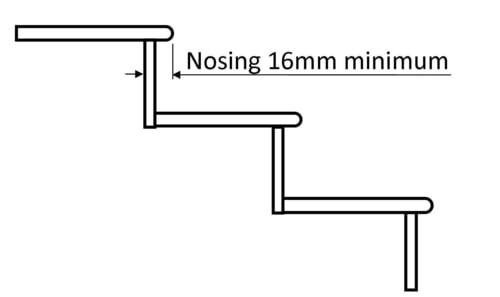
When a stair manufacturer or a carpenter makes stairs, they usually prefer one kind of overhang depth and therefore make the standard seem like a range. It is important never to look only for aesthetics and style but also for comfort, safety, and costs. Sometimes local building codes have measurements that are not the safest. For example, studies have shown that nosing projections have the best safety when they are ¾”, but local building codes can prefer other dimensions.
The IRC says that the tread overhang needs to be from ¾” to 1-1/4” past the riser’s face or riser line to make sure that the going is 10 inches to be acceptable. The overhang can increase the foot placement space that is on the tread, but it will not change the going or tread depth under the definition of the IRC.
Stair treads that are manufactured are mostly 11-1/4” or 11-1/2” deep to be able to protrude past the riser by 1-1/2” or 1-1/4”. To leave a flat extension past the riser’s face that is ¾” or 1”, the forward edge needs to have a radius round-over of ½”. Because to rip the tread to make it behave according to the code is more complicated, carpenters tend to add cove of 5/8” or scroll-work trim to the nosing underside and face of the riser.
Minimum Stair Tread Overhang
It depends on the country how the stair slopes would look or how deep the tread would be and how much the rise needs to be. Safety is the most important factor and it is the reason why the Building Code is changed so often. That is why sometimes things were different in the past and are different now. Nowadays, we replace steep steps with narrow treads with wider treads and gentler slopes. Sometimes, it is enough just to add the nosing and it will fix the problems.
If stairs have tread depths of 11” or more, they do not need the tread to overhang the riser. If they are less than 11”, they need to have a nosing that has a ¾” minimum past the riser line. That is how the 2018 IRC writes it. It is according to studies that nosings that are ¾” are some of the safest overhang depths.
Maximum Overhang for Stair Tread Nosing
The maximum nosing projection, according to the IRC, has to be 1-1/4”. If steps overhang the riser too much it may not be safe to climb the stairs because it may be dangerous since it is more likely that you would trip or slip on them. It does increase the space that is available for a foot to stand but it must have a going of 10”.
Stair Tread Overhang for Carpet
Some people put a carpet on the stairs in order to make them quieter when people are climbing them or for the aesthetics. You need to make sure that the pile’s thickness should not be over the stair overhang of more than 1-1/4” or less than ¾”.
Stair Tread Side Overhang
To cover exposed side seams and for them to be more aesthetically pleasing, people use the side stair overhang. If your stairs are closed on both sides or just on one, they do not need side overhangs. Using side nosing, they should match the overhang on the step’s lead edge and should not be more than 1-1/4’ over the stringer. They are not necessary most of the time.
Tread Overhang on Deck Stairs
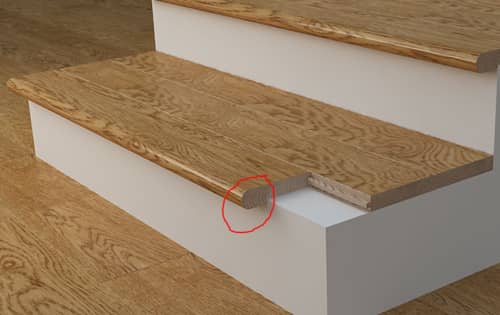
In building codes, both outdoor and indoor stairs are viewed in the same way. The maximum rise should be 7-3/4”, the minimum rise 10”, and the minimum width 36” above the height of the railing. If treads are less than 11”, they need to have an overhang that will be from ¾” to 1-1/4” and protrude past the riser or its line.
For a combined depth of 11”, deck stair treads are usually made of two 5//4×6 or 2×6 deck boards. If 2×12 boards are used, then the depth is 11-1/2” and needs to be notched or ripped in order to behave according to the code. The run unit of the tread that does not have the overhang is a factor in the stringer’s design and the overall rise. The stringer’s individual unit run depends on the depth of the nosing. If a run is 10”, the overhang would be 1” using two 2×6 boards or 5/4×6 ones.
The riser does not need to be closed for outdoor stairs. If you have an open riser, the airflow will be much better, and it is easier to remove snow and dirt. It is important to say that the gap between 30” above-the-ground or floor-level treads is not allowed to permit a diameter sphere of 4” to pass through.
You might also want to know What Size Lumber Is Best for Stair Stringers?
Final Thoughts
The nosing of the tread should overhang between ¾” and 1-1/4” if the tread is not 11” or more in-depth. The lip of the stair makes it safer by making the horizontal space that is for climbing wider and it visually defines the edge of the step. The overhang hides the seam that is between the riser and the tread, making it more aesthetically pleasing.
By the end of this article, you should be able to tell how much the tread should overhang the riser and why. Also, to be able to tell apart different dimensions of stair parts. We hope that this article helped solve your problems with overhangs and treads!


